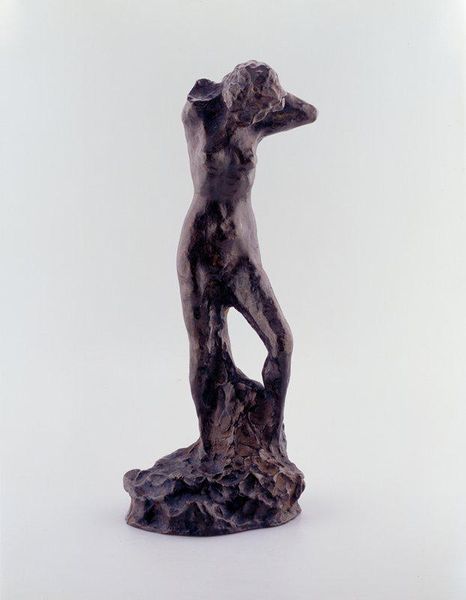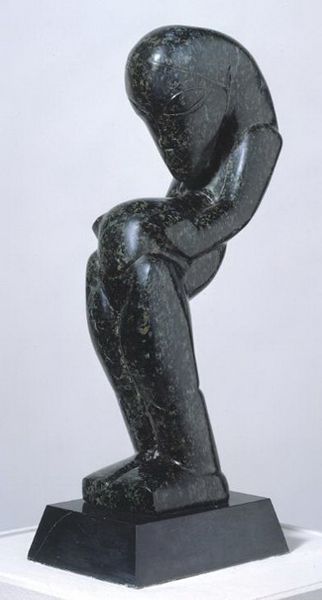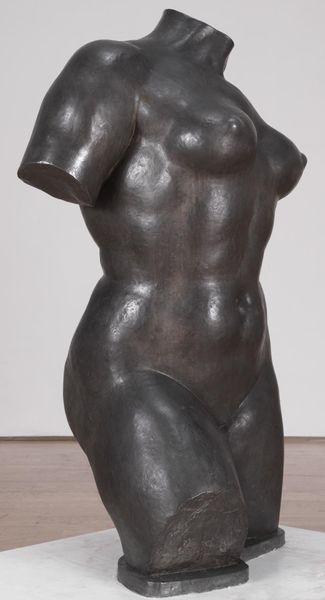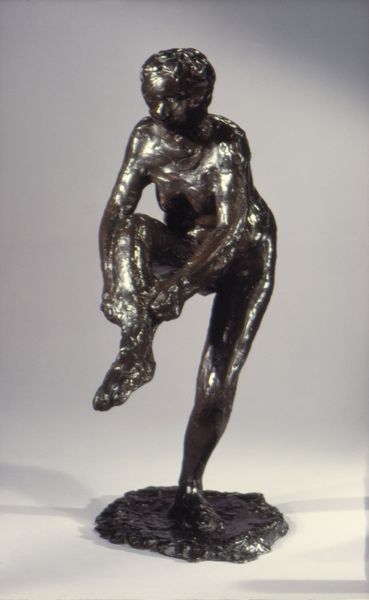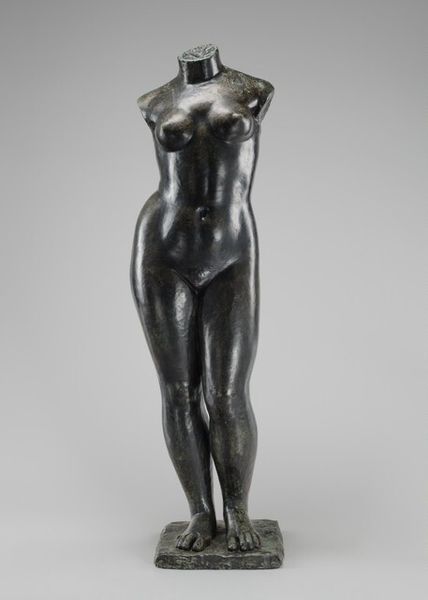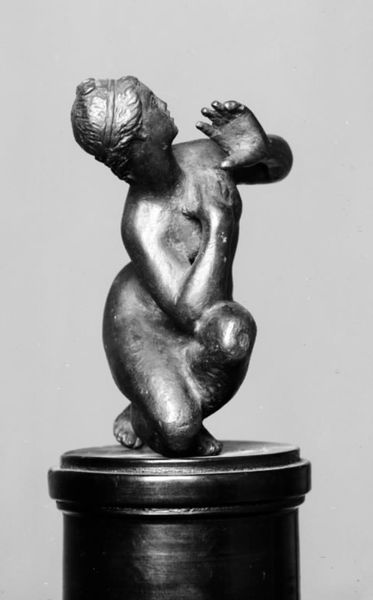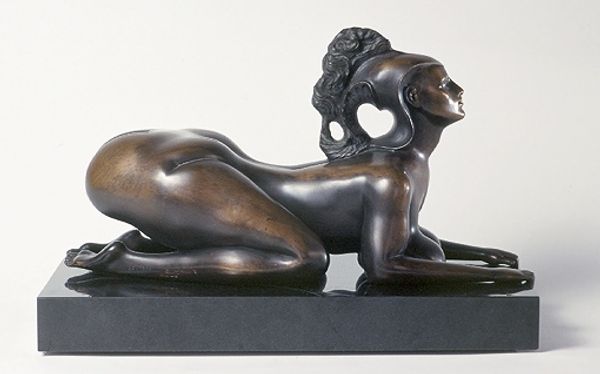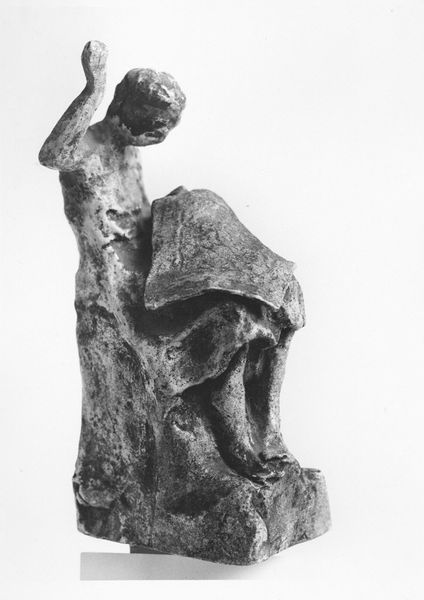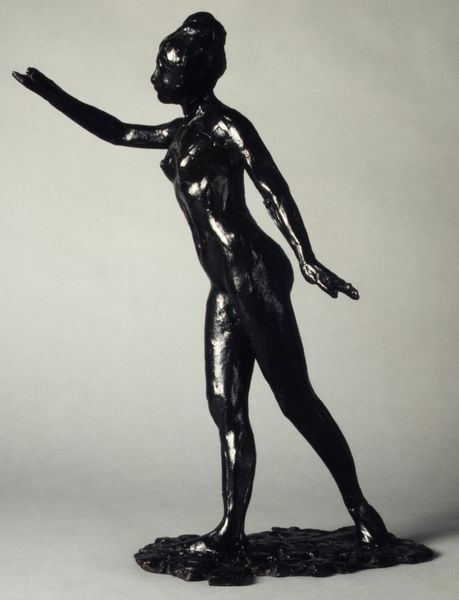
bronze, sculpture
#
portrait
#
sculpture
#
bronze
#
figuration
#
sculpture
#
decorative-art
#
modernism
Dimensions: Overall (with base): 7 1/2 × 3 5/8 × 2 3/4 in. (19.1 × 9.2 × 7 cm); Height (without base): 6 1/8 in. (15.6 cm)
Copyright: Public Domain
This is Auguste Rodin's "Small Torso of Iris," made from bronze sometime in the late 19th or early 20th century. Rodin was, of course, a master of bronze. This particular piece is a fragment, a study that isolates the power of the human form. Look closely, and you will see how Rodin’s hand shaped the supple curves and muscular tension of the figure. The bronze-casting process captures every nuance of the original clay. There are also traces of his process; you can see rough textures, areas where Rodin intentionally left the surface raw and unrefined. Bronze was not just a material for Rodin; it was the means to mass-produce his sculptures. The art world was evolving, and Rodin was one of the first to recognize that sculptural reproduction could be a legitimate artistic practice. So, when you look at this sculpture, think about the labor, the material, the touch of the artist's hand, and the context of a changing art world. The process, material, and social context are all crucial to understanding its full impact.
Comments
No comments
Be the first to comment and join the conversation on the ultimate creative platform.
